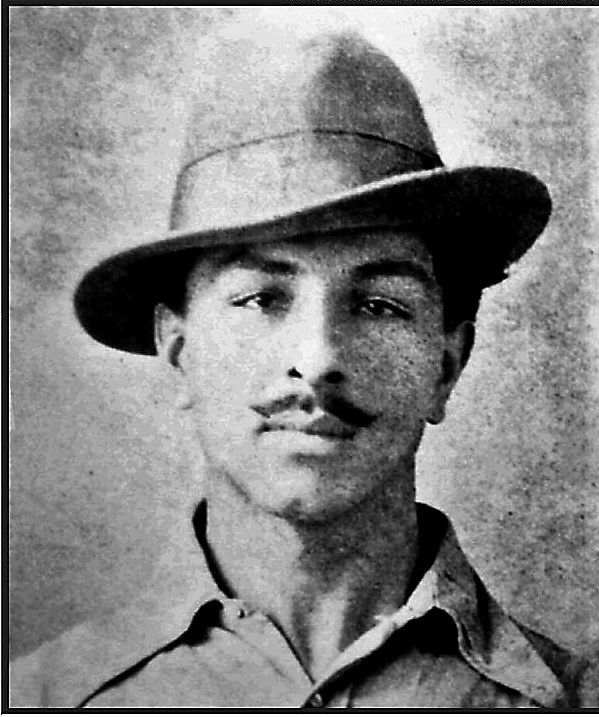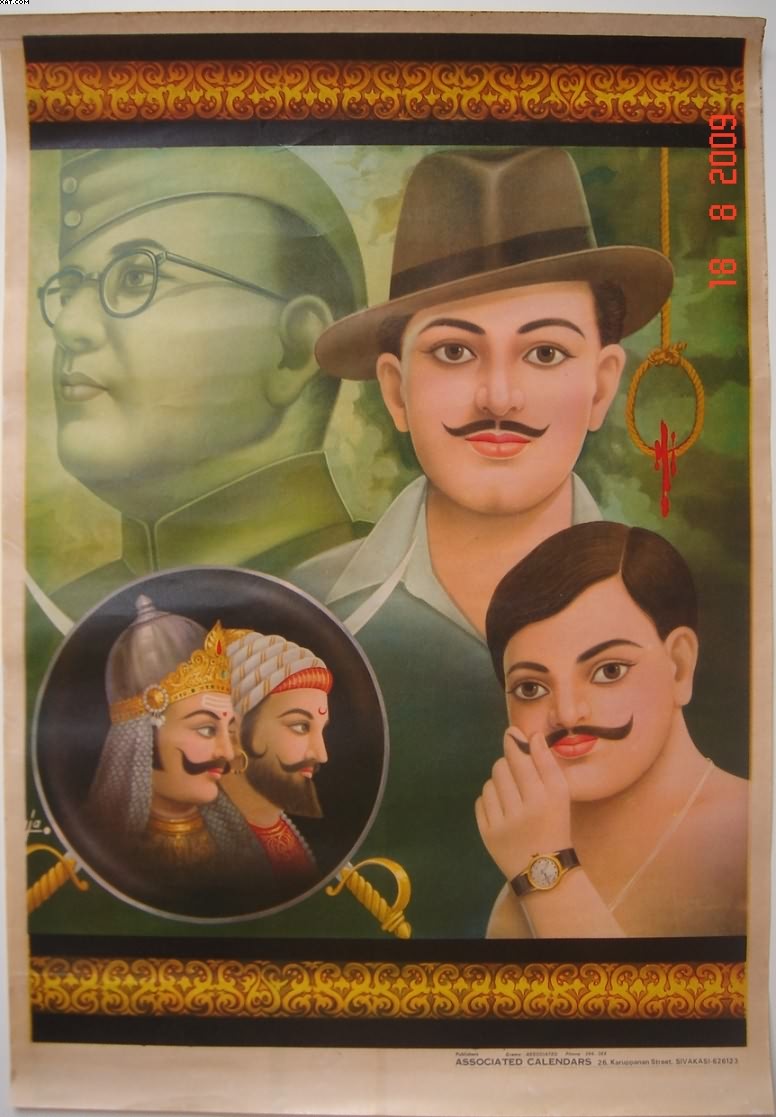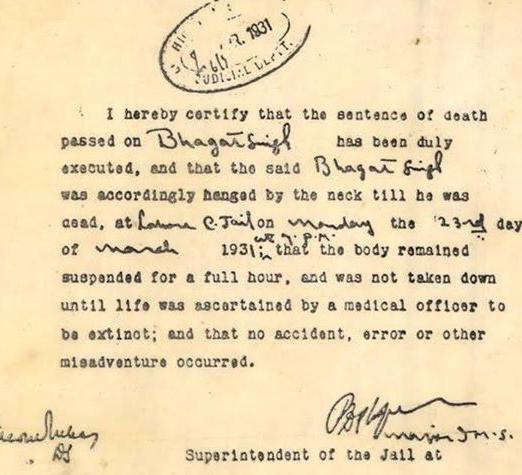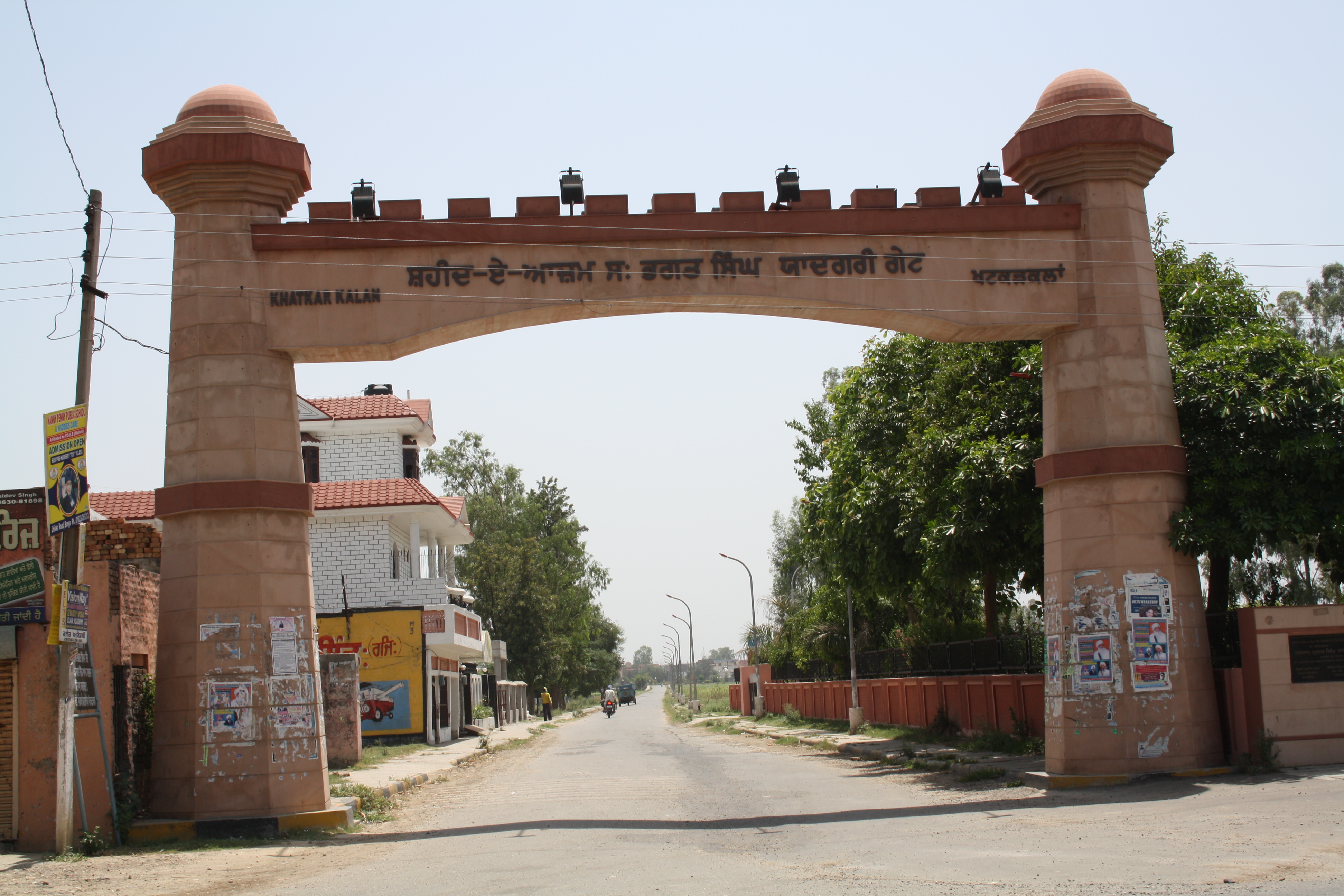Bhagat Singh has been the icon of young socialist revolutionaries for Indians. His ideas, speeches and writings epitomised the feelings of the young revolutionaries in India at the time and highlighted the fact that the demand for throwing off the Imperial British yoke had reached fever pitch.
Bhagat Singh is the most prominent representative of a movement that sprung up at a time when Mahatma Gandhi’s policy of non-violent civil disobedience was stagnating, especially after the Non-Cooperation Movement was called off. The youth at the time resorted to arms in their struggle for freedom and used violent means to achieve their goals.
His most chronicled acts were the killing of John Saunders, a 21-year-old police officer, as revenge for the death of Lala Lajpat Rai, and his hunger strike while in prison. He became a popular folk hero after his death. Jawaharlal Nehru wrote about him, "Bhagat Singh did not become popular because of his act of terrorism but because he seemed to vindicate, for the moment, the honour of Lala Lajpat Rai, and through him of the nation. He became a symbol; the act was forgotten, the symbol remained, and within a few months each town and village of the Punjab, and to a lesser extent in the rest of northern India, resounded with his name.”
Inqilab, a documentary directed by Gauhar Raza, provides a video chronicle of Bhagat Singh’s life and legacy.
Early Life
Bhagat Singh was born to Kishan Singh and Vidyavati at Chak No 105 GB, Banga village, Jaranwala Tehsil in the Lyallpur district of the Punjab Province of British India. There is some dispute over his exact birthday, with official records stating it as September 27 or 28; however, some evidence suggests he was born in October.
His family members were Sandhu Jat Sikhs, and his ancestral village of Khatkar Kalan, near the town of Banga, India in Nawanshahr district (now renamed Shaheed Bhagat Singh Nagar), of Indian Punjab, is a historically significant site, even though the revolutionary never visited it during his lifetime.
Bhagat Singh’s family was active in the Independence movement and influenced his character. His grandfather, Arjun Singh followed Swami Dayananda Saraswati's Hindu reformist movement, Arya Samaj, which led to the young Bhagat Singh attending the Dayanand Anglo-Vedic High School, an Arya Samaji institution, for his education. His father and uncles were members of the Ghadar Party, led by Kartar Singh Sarabha and Har Dayal. In 1919, when he was 12 years old, Singh visited the site of the Jallianwala Bagh massacre hours after thousands of unarmed people gathered at a public meeting had been killed. He participated in the non-cooperation movement but became disillusioned with Mahatma Gandhi's philosophy after he called it off following the Chauri Chaura incident and joined the Young Revolutionary Movement which advocated the violent overthrow of British Rule in India.
In 1921, Singh joined the National College in Lahore, where he picked up a love for theatre and first thought of using theatrical gestures in the freedom struggle. He also founded the Indian nationalist youth organisation Naujawan Bharat Sabha in March 1926 and became a member of the Hindustan Republican Association (HRA), where he met other youth revolutionaries such as Chandrashekhar Azad, Ram Prasad Bismil and Shahid Ashfaqallah Khan. In 1924, to avoid an arranged marriage, Singh ran away to Cawnpore (Kanpur). In a letter he left behind, he said: ‘My life has been dedicated to the noblest cause, that of the freedom of the country. Therefore, there is no rest or worldly desire that can lure me now.’
As part of his efforts in the freedom struggle, Bhagat Singh wrote for, and edited, Urdu and Punjabi newspapers published in Amritsar and Delhi and also contributed to pamphlets published by the Naujawan Bharat Sabha. He often used pseudonyms, including names such as Balwant, Ranjit and Vidhrohi.
Bhagat Singh was arrested in May 1927 for his alleged involvement in a bombing that had taken place in Lahore in October 1926. He was released shortly afterward on a security bond of INR60,000 five weeks after his arrest.
Saunders Assassination
When the Simon Commission visited Lahore on October 30, 1928, Lala Lajpat Rai led a march against it. The superintendent of police, James A. Scott, ordered the police to lathi charge the protesters and personally assaulted Rai, who was injured. Rai died on November 17, 1928, and doctors thought that his death might have been hastened by the injuries he had received.
Bhagat Singh and the Hindustan Socialist Republican Association (HSRA), which the HRA had been renamed, vowed to avenge Rai's death. Bhagat Singh was one of the masterminds behind what came to be known as the Lahore conspiracy. However, in a case of mistaken identity, Rajguru and Singh shot John P. Saunders, an Assistant Superintendent of Police, as he was leaving the District Police Headquarters in Lahore on December 17, 1928. The duo escaped through the D.A.V. College entrance, across the road from the District Police Headquarters. Chanan Singh, a Head Constable who was chasing them, was fatally injured by Chandrashekhar Azad's covering fire. The conspirators eluded capture and reached Calcutta (Kolkata) despite a citywide curfew and blockade.
Central Legislative Assembly bombing
In 1929, Bhagat Singh proposed and planned a theatrical act to set off a non-lethal bomb inside the Central Legislative Assembly in Delhi. Singh planned to let himself be arrested and use court appearances as a stage to publicise their cause. Despite worries that his involvement in the Saunders shooting would lead to his execution if found out, Singh and Batukeshwar Dutt threw two bombs into the Assembly chamber on April 8, 1929, from the public gallery. They then threw leaflets and stayed in place, shouting the slogan ‘Inquilab Zindabad’ (‘long live the revolution’).On June 12, both men were sentenced to life imprisonment for the bombing.
HSRA arrests and Lahore conspiracy case
The police raided the Lahore bomb factory of the HSRA on 15 April 1929 and arrested several prominent revolutionaries. Three individuals, Hans Raj Vohra, Jai Gopal and Phanindra Nath Ghosh turned informers for the Government which led to a total of 21 arrests including those of Sukhdev, Jatindra Nath Das and Rajguru. Bhagat Singh was re-arrested for the Lahore Conspiracy case, the murder of Assistant Superintendent Saunders and bomb manufacturing.
The trial started against 28 accused in a Special Tribunal presided over by Judge Rai Sahib Pandit Sri Kishan. To speed up the slow trial, the Viceroy, Lord Irwin, declared an emergency on May 1, 1930, and introduced an ordinance to set up a special tribunal composed of three high court judges for the case. This decision cut short the normal process of justice as the only appeal after the tribunal was to the Privy Council located in England. On October 7, 1930, the tribunal, in its 300-page judgement, concluded that the participation of Singh, Sukhdev, and Rajguru in Saunders’ murder was proven. They were sentenced to death by hanging.
The Special Tribunal was the only one of its kind ever to be constituted. After refusing to let themselves be handcuffed, the accused were kept away from the court and the judgement was passed with them absent. The ordinance, which was introduced by the Viceroy to form the Special Tribunal, was never approved by the Central Assembly or the British Parliament, and it eventually lapsed.
Hunger strike
Singh had been a polarising figure in the freedom struggle, with the Indian National Congress and Mahatma Gandhi criticising his violent acts. However, the hunger strike he and his fellow inmates undertook in pursuit of equal treatment for prisoners turned him into a national hero.
Bhagat Singh considered himself and his comrades to be political prisoners and led them on a hunger strike as he felt they were being treated as common criminals. The protesters demanded equality in food standards, clothing, toiletries, and other hygienic necessities, as well as access to books and a daily newspaper.
The hunger strike inspired a rise in public support for Singh and his colleagues. Jawaharlal Nehru, after meeting Singh and the others in jail, stated, “I was very much pained to see the distress of the heroes. They have staked their lives in this struggle. They want that political prisoners should be treated as political prisoners.”
The government tried to break the strike by placing different food items in the prison cells to test the prisoners' resolve. Water pitchers were filled with milk so that either the prisoners remained thirsty or broke their strike. The authorities even attempted force-feeding the prisoners. The hunger strike had gained popularity and attention amongst the people nationwide, so the government decided to advance the start of the Saunders murder trial.
The government was beginning to make concessions but refused to move on the core issue of recognising the classification of 'political prisoner'. The condition of Jatindra Nath Das deteriorated and on September 13, 1929, he died after a 63-day hunger strike. Singh ended his hunger strike on October 5, 1929, after 116 days.
Execution
The appeal to the Privy Council in London was denied and plans to break the trio out of jail proved futile. Singh, Rajguru and Sukhdev were ordered to be hanged on March 24, 1931. Even negotiations between the Viceroy Lord Irwin and Mahatma Gandhi ended in failure. Fearing a mob backlash, the schedule was moved forward by 11 hours and Bhagat Singh, Sukhdev and Rajguru were hanged on March 23, 1931, at 7:30 pm in the Lahore Jail. The jail authorities then reportedly broke a hole in the rear wall of the jail, removed the bodies, and secretly cremated the three men under cover of darkness outside Ganda Singh Wala village, and then threw the ashes into the Sutlej river, about 10 kilometres (6.2 mi) from Ferozepore.
Aftermath
The execution led to mass protests and even incidents of violence. The New York Times reported that over 50 people were killed in clashes following the death of Bhagat Singh and Mahatma Gandhi was assaulted by a youth in Karachi, where the Indian National Congress’ convention was due to take place.
National leaders such as Gandhi, Nehru, Subhash Chandra Bose and Mohammad Ali Jinnah all condemned the executions of Bhagat Singh, Sukhdev and Rajguru. There was a heavy backlash against the government in Britain as well, as seen by the Communist Party of Great Britain’s reaction to the case: “The history of this case reflects the symptoms of callousness and cruelty which is the outcome of bloated desire of the imperialist government of Britain so that fear can be instilled in the hearts of the repressed people.”
Memorials and legacy
The impact of Bhagat Singh’s actions on the youth of India is felt to this day. While he is not easily classified as part of any movement, he is remembered for his actions in fighting British Imperial rule and the fact that he was unafraid of death. There are many museums and exhibits that portray the story of his life.
The Shaheed-e-Azam Sardar Bhagat Singh Museum opened on the 50th anniversary of his death at his ancestral village, Khatkar Kalan. Exhibits include Singh's half-burnt ashes, the blood-soaked sand, and the blood-stained newspaper in which the ashes were wrapped. A page of the first Lahore Conspiracy Case's judgement in which Kartar Singh Sarabha was sentenced to death and on which Singh put some notes is also displayed, as well as a copy of the Bhagwad Gita with Bhagat Singh's signature, which was given to him in the Lahore Jail, and other personal belongings. The Bhagat Singh Memorial was built in 2009 in Khatkar Kalan as well.
The Nehru Memorial Museum and Library (NMML) and Act Now for Harmony and Democracy (ANHAD), a non-profit organisation, co-produced a 40-minute documentary on Bhagat Singh titled Inqilab, directed by Gauhar Raza in 2008. There is a large exhibit devoted to Bhagat Singh at the NMML.
The historic semi-automatic .32-bore Colt-make pistol used by Bhagat Singh to kill British officer John Saunders in 1928 is on display at the old museum of the Central School of Weapons and Tactics (CSWT), in Indore.
Bhagat Singh had stated, “They may kill me, but they cannot kill my ideas. They can crush my body, but they will not be able to crush my spirit.” His life and the manner of his death reflected this philosophy and showed the people of India how precious their right to freedom was.







